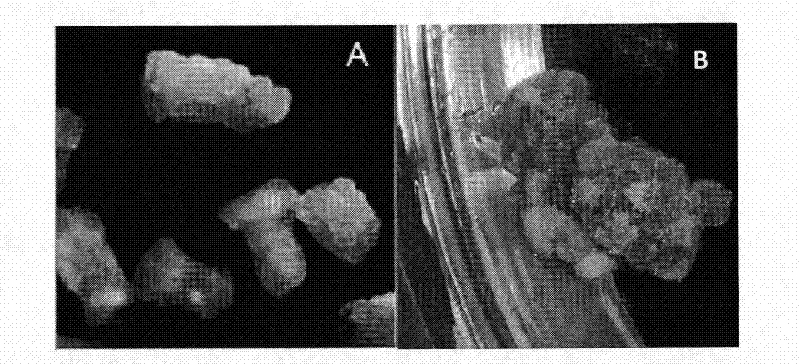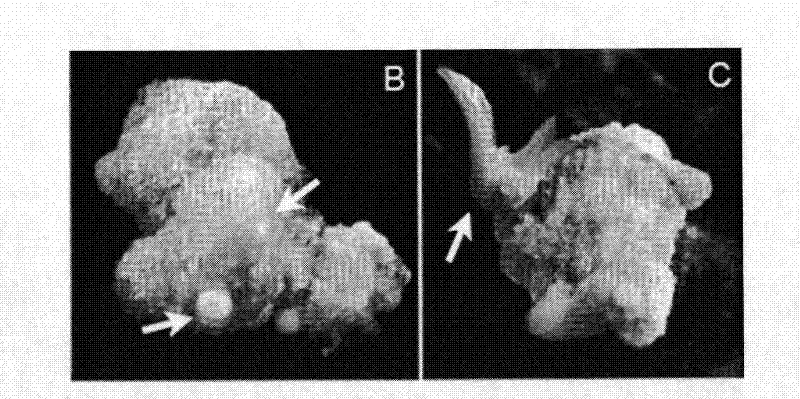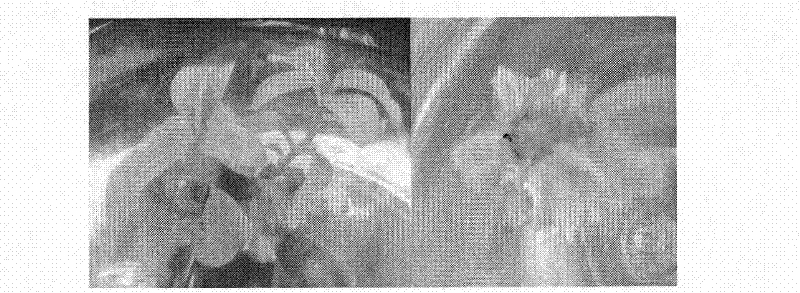Method using hypocotyl of catharanthus roseus for cultivating regenerated plants
A technology for regenerating plants and periwinkle, applied in the biological field, can solve problems such as inability to achieve synchronization, failure to establish a high-efficiency mature periwinkle hairy root regeneration system, formation of deformed or rootless seedlings, etc.
- Summary
- Abstract
- Description
- Claims
- Application Information
AI Technical Summary
Problems solved by technology
Method used
Image
Examples
Embodiment
[0032] Step 1: Induction of periwinkle hypocotyl callus
[0033] Put the periwinkle seeds on the MS medium to germinate for 4-5 days, and when the first pair of cotyledons just grow out, remove the hypocotyl, cut into 5-10mm long segments, and place them in callus induction culture On the basis; the callus induction medium is: MS medium+1.0mg / L 2,4-dichlorophenoxyacetic acid+1.0mg / Lα-naphthaleneacetic acid+0.1mg / L zeatin+150mg / L hydrolysis Milk protein + 250mg / L proline + 3% sucrose + 0.3% plant gel; the pH of the callus induction medium is 5.8; after 10-12 days of light culture, the culture temperature is 25±1℃, and the light is lighted every day After 16 hours, a transparent and relatively loose massive callus can be formed at the cut site of the explant, and the callus induction rate reaches 100%;
[0034] Step 2, differentiation of periwinkle hypocotyl callus
[0035] Then the callus was inoculated on the differentiation medium, and the differentiation medium was: MS med...
PUM
 Login to View More
Login to View More Abstract
Description
Claims
Application Information
 Login to View More
Login to View More - R&D Engineer
- R&D Manager
- IP Professional
- Industry Leading Data Capabilities
- Powerful AI technology
- Patent DNA Extraction
Browse by: Latest US Patents, China's latest patents, Technical Efficacy Thesaurus, Application Domain, Technology Topic, Popular Technical Reports.
© 2024 PatSnap. All rights reserved.Legal|Privacy policy|Modern Slavery Act Transparency Statement|Sitemap|About US| Contact US: help@patsnap.com










